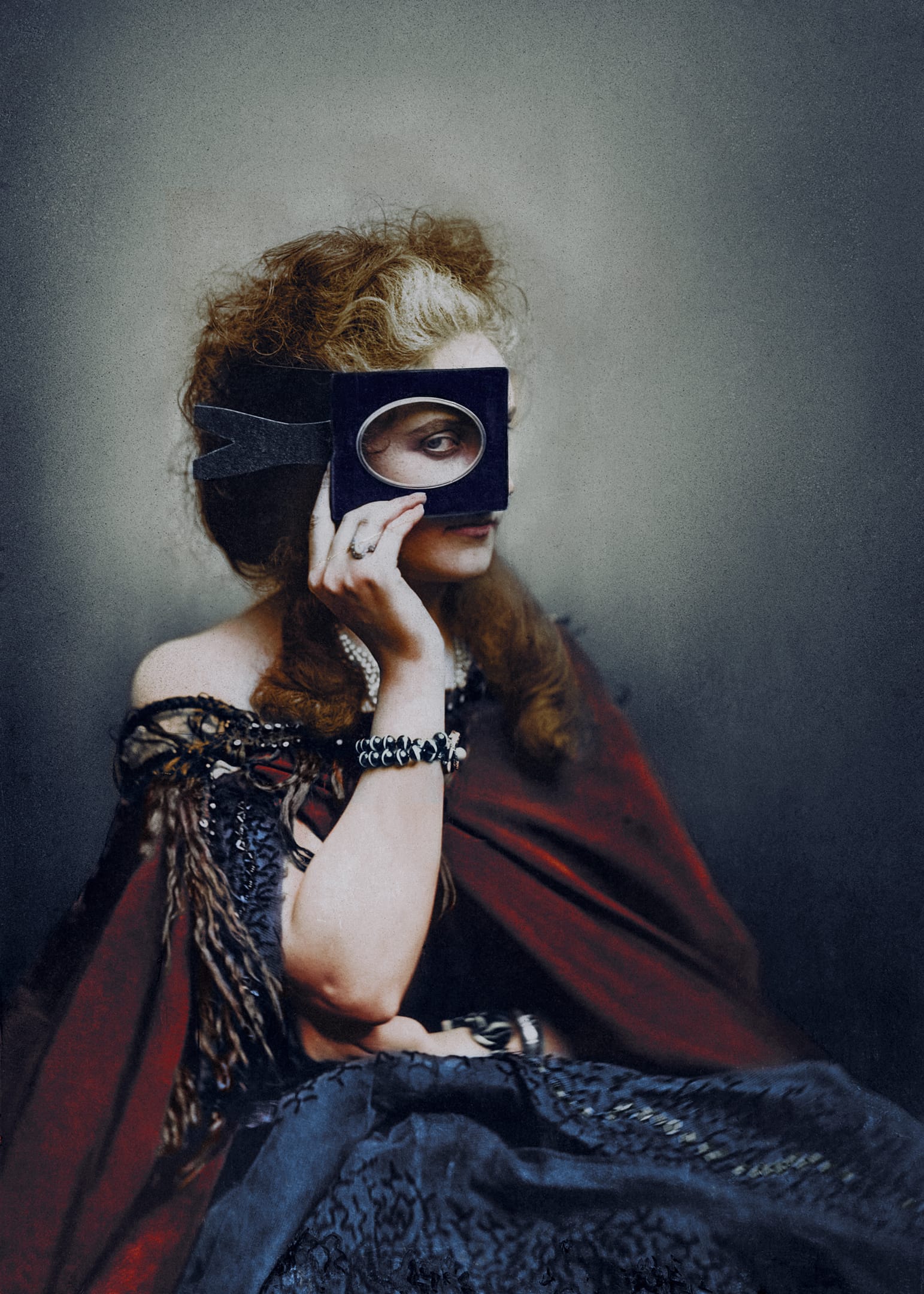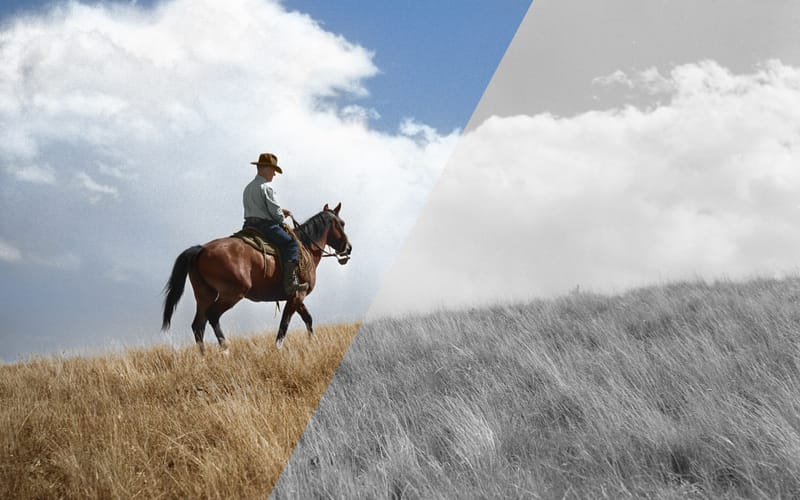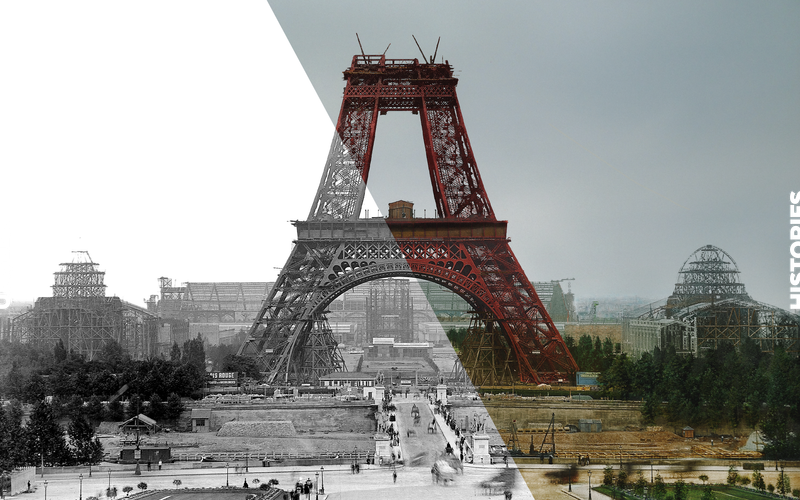Meet the Countess of Castiglione, c.1865
'La Divine Comtesse' was considered the most beautiful woman of her day
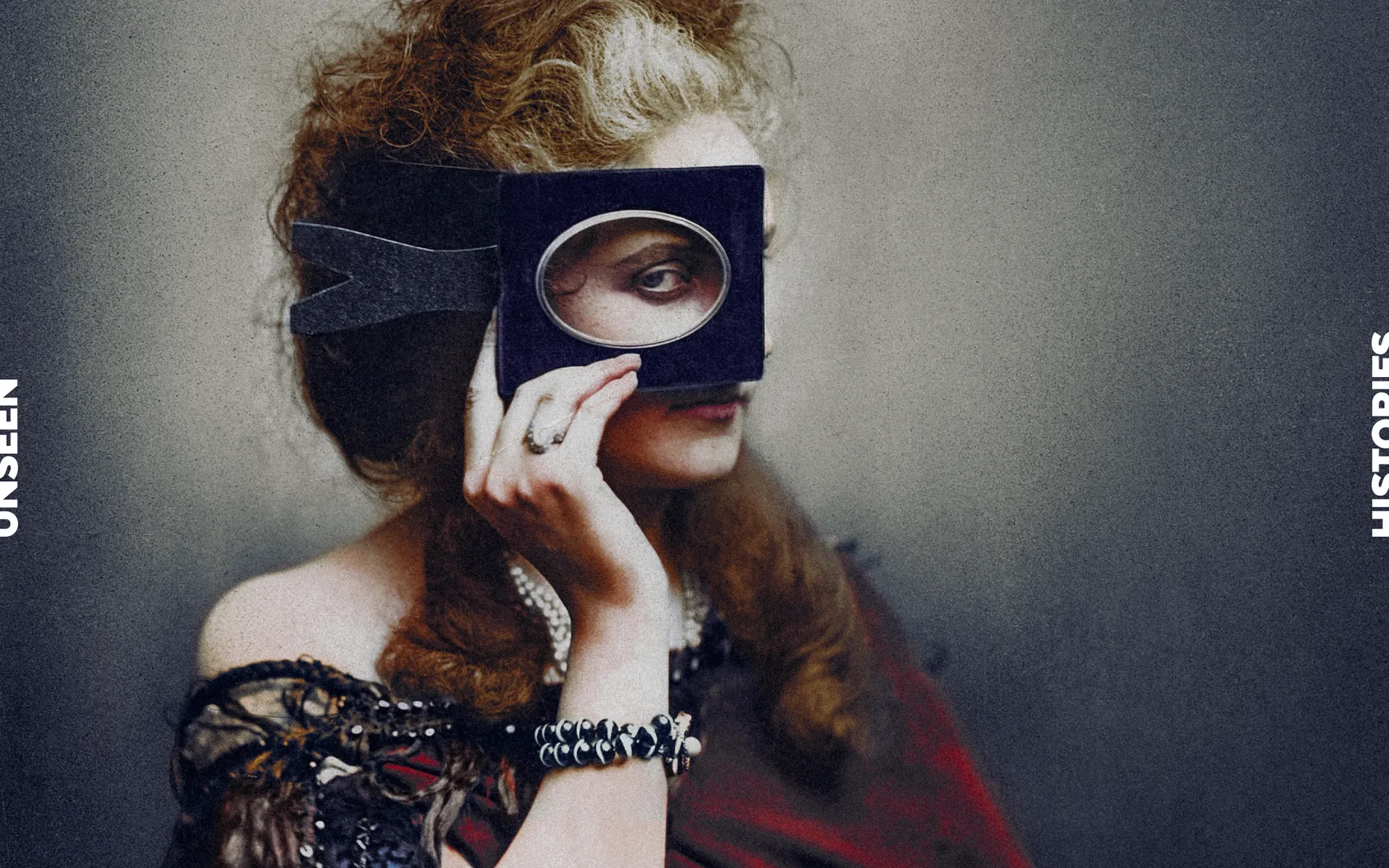
Throughout her life the Countess of Castiglione collaborated with the French photographer Pierre-Louis Pierson.
Their joint aim was to capture the beauty and style of a lady who was described, when she died in 1899, as 'one of the most extraordinary women of this century'.
Few who saw the countess in her heyday at the Tuileries would disagree with this. The countess was the undisputed star of the court. 'A woman of brilliant parts and great wealth', she dazzled her lover Napoleon III and set conversation and trends alight across Europe.
It was during these years of society success that Pierson and the countess produced one of the most striking images in the early history of photography.
It is a playful, provocative photograph, shown in colour at the foot of this page, entitled 'Scherzo di Follia'.

Virginia Oldoini's early life is a mix of the fairytale and the thriller. Born in Tuscany in 1837 she was recruited as a political agent in the mid-1850s and sent to Paris. Her cause was the reunification of Italy and the politician Camillo Benso, the Count of Cavour, apparently charged her with the orders. 'Succeed by whatever means you wish — but succeed!'
It seems a very unusual thing for a young girl to be sent to a great capital city as the agent of a huge national cause. But Oldoini was no ordinary girl. From her earliest years she was said to possess charm and beauty in unparalleled measure. By the time she left for France she was already married to Francesco Verasis, Count of Castiglione, an older Italian nobleman. Soon she was at the Tuileries and not long after that she was being fêted by the beau monde:
8 November 1856
Amongst the ladies who have excited most admiration in the Imperial circle are Madam de Serrano, wife of the Spanish Ambassador, and the Countess de Castiglione, both of whom are young beautiful and dressed with exquisite taste.

At this moment in French history, the balls at the court of Napoleon III were something to behold. The full opulence of one was captured in 1863:
14 February 1863
The fancy ball given by their Majesties at the Tuileries on Monday night was remarkable alike for its magnificence, its animation, and its infinite variety.
The splendour of the rooms, the richness of the costumes, and the originality of the dances rendered this fete of extraordinary brilliancy. Not more than six hundred invitations has been sent, so that the company was unusually select: still it embraced all the highest personages in Paris.
The Empress was attired as a Venetian lady of the middle ages, her dress crimson and black, being covered with sequins interspersed with diamonds.
The Emperor wore a Venetian mantle of white and crimson; and it was remarked that several high dignitaries had on a somewhat similar costume. The Prince Imperial, in black vest and continuations, with crimson stockings and Venetian mantle, remained in the rooms until eleven.
The Princess Mathilde, representing Anne of Cleves, as seen in Holbein’s picture in the Louvre had her dress covered with an immense quantity of magnificent emeralds. The Princess Clotilda, in gold brocade, wore her hair arranged with powder; and the Princess Augusta Bonaparte had on the dress of a Syrian woman.
The Countess de Persigny represented Fire; the Countess of Castiglione, Salambo, with her hair given to the wind, a golden diadem above, bare arms, and naked feet in golden sandals.
There was no one to rival the countess. Not long after her arrival she had become the emperor's mistress and following this conquest her every move was watched, scrutinised and imitated.
The countess's reputation was by no means confined to the Parisian court. This was an age of great nationalism when the old rivalry between Britain and France continued to burn. A story was later told that in these years Lord Palmerston, the Prime Minister, tried to counter the countess's charms on one of her visits to London.
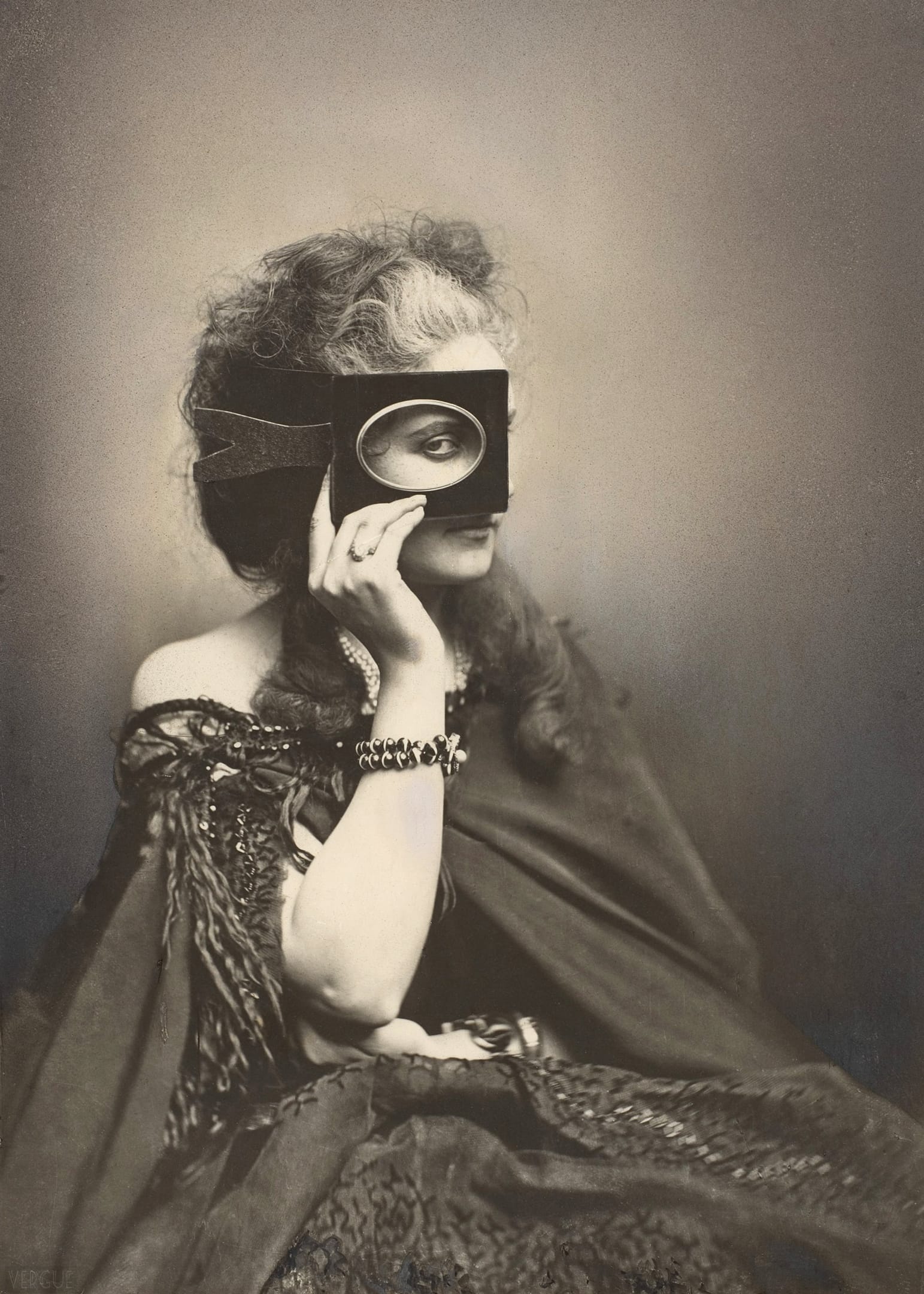
Palmerston's plan was this. Knowing that the countess was due to appear at a splendid dinner he was poised to give, he invited 'nine of England's greatest beauties to meet that of the Castiglione'.
5 September 1878
They were all assembled when she entered, crushing and overwhelming as the statue of Venus Anadyomene among those of lesser divinities, and all the criticisms of her coiffure, toilette, haughty, imperious air, were set at naught by the fact that every line was perfect.
The 'Scherzo di Follia' photograph dates to these years of high celebrity. Taken at some point in the early to mid 1860s, it shows the countess as a playful, poised, confident presence. By this time, too, her association with the society photographer Pierre-Louis Pierson was well underway.
The countess was the driving force in this creative partnership, whose purpose it was, as one scholar has noted: 'to chronicle her natural beauty and extravagant couture to re-create for posterity the great moments of her public life, and to bring expression to her private fantasies.'
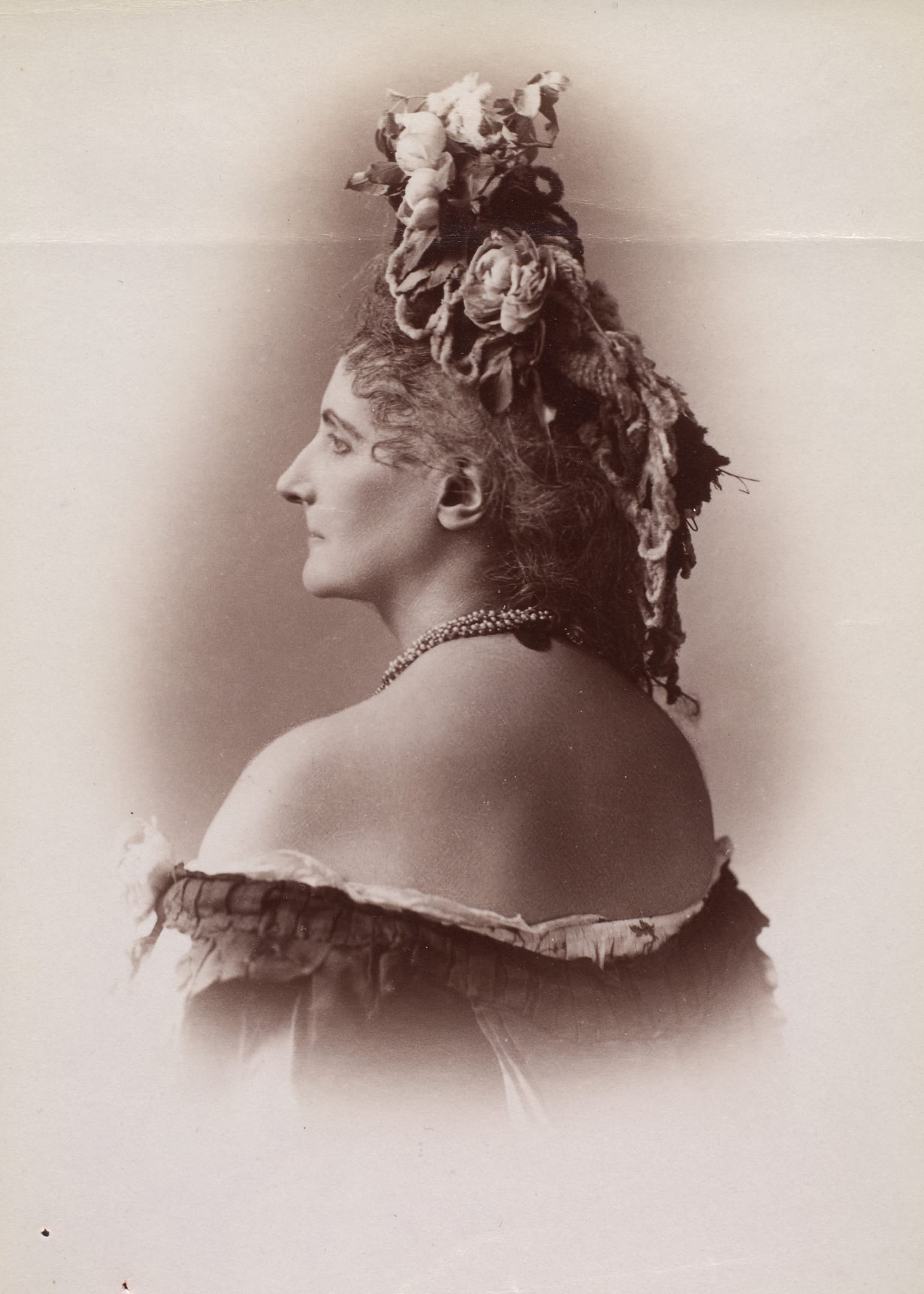
Pierson's photographs of the countess show both how comfortable she was in his presence as well as her strong narcissistic streak - something that was acknowledged by those who knew her.
Pierson photographed the countess in his studio from all angles and in a huge number of different poses. In many she gazes straight into the lens; in others she tilts her head away from the camera; sometimes she feigns sleep, occasionally she isolates a single body part for Pierson to capture in majestic detail. One of his photographs is starkly titled: 'The Legs of the Countess de Castiglione'.
All of this may seem hackneyed to a twenty-first century eye: Instagrammish, self-obsessed, obvious. But it is important to appreciate how novel this appeared to contemporary audiences. No one had used themselves as a subject in such an intense way before. For many it gave Pierson's photographs an edgy, experimental air.
As Philippe de Montebello, the Franco-American museum director has commented, Pierson's long series of photographs, ‘are a brilliant prefiguration of trends that we would think of as distinctly modern: the shaping of a public persona through the careful construction and control of photographic images; the assumption of multiple guides to mask true identity; and the challenging of women’s traditional roles and behaviour.’
The countess belonged to an age of great opulence and expression. Her greatest years came in the 1850s and 1860s, but after the collapse of the Second Empire, her star faded. Just as quickly as she had stormed the stage, she vanished from public view. Occasionally people would remember anecdotes of the countess's dazzling days at court, but little new was heard of her.
In 1899 a nostalgic notice appeared in the British papers:
30 November 1899
The Paris Figaro announces the death, in Paris, of one of the most extraordinary women of the century.
This was the Countess Castiglione, one of the beauties of the Court of the Second Empire. A woman of brilliant parts and great wealth, she settled in the French capital in 1858 [sic] revelled in the gaieties of its societies until the German war, and ever since has lived the life of a recluse — half hermit and half miser.
In small apartments near the Place Vendome, fitted up with much rich furniture, but without servants, she has passed the last 20 years shut up from the world and never seen outside.
Her food was brought to her daily from a restaurant by a boy, whom she shut up in a wall cupboard whilst she emptied his basket. No infrequently she forgot the little prisoner, and left him shut up for hours.
